13th SS Mountain Division "Khanjar". The birth of an unusual military unit
Translation of an article published in the German military history magazine "DMZ-Zeitgeschichte" No. 45 May-June 2020.
By Dr. Walter Post
Translation: Slug_BDMP
Illustrations: magazine "DMZ-Zeitgeschichte"
Translator's note. This material echoes the sketches “Operation“ Knight's Move ”previously published in the Military Review. Drvar, May 1944 "and" The Hunt for Tito. May 1944 ". In particular, it provides answers to some of the questions asked by readers in the comments, for example, about the origins of the conflict between the Chetniks and the communist partisans.
As a result of the First World War, the Austro-Hungarian Empire collapsed. Its southeastern provinces - Croatia, Slovenia, Bosnia and Herzegovina united on December 1, 1918 with the Kingdom of Serbia, which was one of the victorious powers. Thus, the State of Serbs, Croats and Slovenes (GSHS) was born.
This multinational state also included Montenegro, North Macedonia and Vojvodina, which was home to some 340000 ethnic Germans. The most numerous ethnic group in the GSKhS was the Serbs. They made up more than 40 percent of the population and were among the winners of the First World War. Thus, the Serbs occupied a dominant position in the country. In addition, the State Agricultural Union was one of the poorest and most backward countries in Europe.
All this led to high social tension and interethnic conflicts, especially between Serbs and Croats. The situation threatened to explode, which led to the establishment of the dictatorship of King Alexander I Karageorgievich in early January 1929.
As a result of the constitutional reform, the name of the state was changed to "Kingdom of Yugoslavia".
On October 9, 1934, during a state visit to French Marseille, King Alexander Karadjordievich fell victim to an assassination attempt organized by Croatian nationalists and carried out by the Macedonian Vlado Chernozemsky.
The heir to the throne, Peter II, at that time was only 11 years old, so the prince-regent Paul became the ruler of the country.
***
In 1940, after the victorious French campaign, Hitler called on Yugoslavia to join the Axis. With the help of trade and economic treaties, he tried to ensure a reliable connection between Germany through the territory of Yugoslavia and Hungary with Romania and Bulgaria - the most important suppliers of raw materials for the German economy in the Balkans. Another goal was to prevent Britain from gaining a foothold in the region. On October 29, 1940, the Kingdom of Italy opened hostilities against Greece from the territory of Albania (formerly under the Italian protectorate).
However, two weeks later, as a result of fierce resistance from the Greek army and the harsh natural conditions of the mountainous terrain, the Italian offensive stopped. Mussolini started this war without an agreement with Berlin. The result was what Hitler most feared - Britain entered the war on the side of Greece, sending there not only material assistance, but also a military contingent. British troops landed in Crete and the Peloponnese.
On March 25, 1941, the Belgrade government succumbed to German pressure and joined the 1940 Triple Pact concluded by Germany, Italy and Japan.
But two days later, a coup d'état took place in Belgrade, led by General Dusan Simovic and other high-ranking military men - supporters of the alliance with Great Britain and the USSR. Prince Regent Paul was removed from power. And the 17-year-old King Peter II Karageorgievich was declared the current ruler.
Hitler took these events as a violation of the treaty.
And on the same day, in his order No. 25, he declared the need for a lightning strike
The next step was to be the occupation of Greece and the expulsion of British troops from the Peloponnese and Crete.
***
The Balkan campaign, in which the troops of Italy, Hungary and Bulgaria also participated, began on April 6, 1941.
The resistance of the royal Yugoslav army was ineffective. One of the reasons for this was that the Croats, Slovenes and ethnic Germans who served in it were unwilling to fight. And they often openly sympathized with the Axis forces.
Fierce resistance was offered only by purely Serb units, which, however, could not prevent defeat. Only eleven days later, on the evening of April 17, Foreign Minister Aleksandr Chinar-Markovic and General Miloiko Jankovic signed an unconditional surrender.
Since the Wehrmacht and the Italian army were in a hurry to invade Greece as soon as possible, they did not have the opportunity to systematically dissolve the Yugoslav army. Of the more than 300000 prisoners of war, only Serbs were held in camps, while representatives of other ethnic groups were released.
Others (about 300000 Yugoslav military personnel, who, in general, were out of the reach of the Germans and their allies) simply went home. Many took with them weapon and moved "into the mountains", joining the monarchists - Chetniks or communist partisans.
Berlin and Rome pursued the following goals in Yugoslavia:
- to take control of the country's raw materials and put them at the service of German and Italian industry;
- After satisfying the territorial claims of Hungary and Bulgaria, tie these countries more strongly to the Axis.
The fact that Yugoslavia began to disintegrate during the war contributed to these plans. On April 5, the day before the start of hostilities, the leader of the Croatian Ustasha movement Ante Pavelic, who was in exile in Italy, spoke on the radio and called on the Croats
On April 10, 1941, one of the leaders of the Ustasha - Slavko Quaternik - proclaimed the Independent State of Croatia (NGH). On the same day, German troops entered Zagreb, where they were triumphantly met by the local population. They were just as friendly received in Bosnia and Herzegovina.
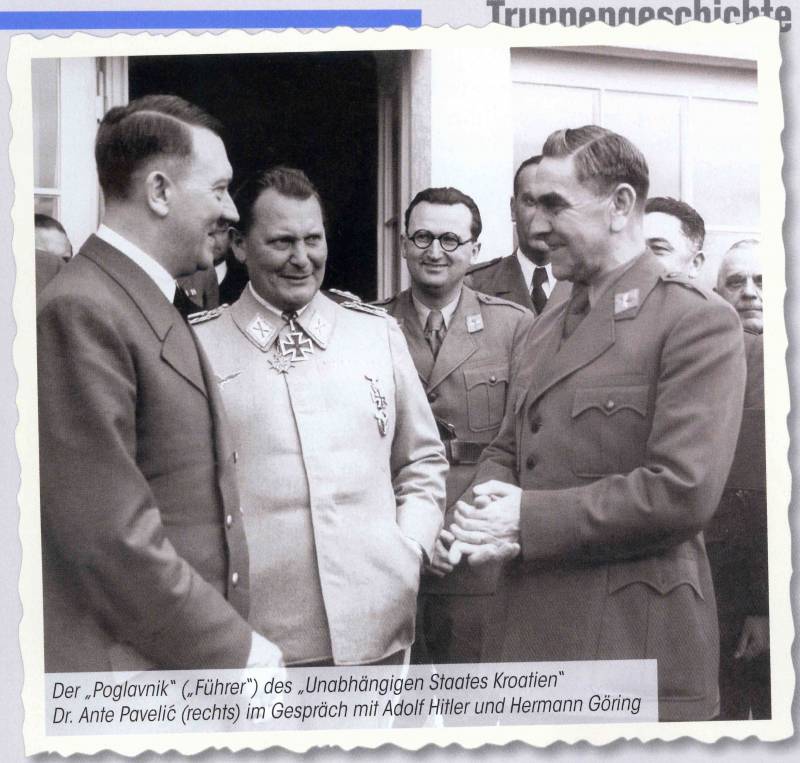
Ante Pavelic (right), the “leader” (leader) of the Independent State of Croatia, meets with A. Hitler and G. Goering.
Italy annexed western Slovenia with its largest city Ljubljana and part of Dalmatia - a coastal territory with the cities of Split and Sibenik and islands. Montenegro was occupied by Italian troops.
Most of Kosovo and northeastern Macedonia were annexed to Albania. Lower Styria, which has been under the rule of Yugoslavia since 1919, was annexed to the German Reich. Bulgaria inherited most of Macedonia, and Hungary - parts of Vojvodina - Bachka and Baranya, as well as the Medzhimursk region.
A German military administration was established in Serbia. At the end of August 1941, a “Government of National Salvation” was proclaimed in Belgrade, headed by General of the Yugoslav Royal Army, Milan Nedić. The command of the German troops in Serbia tried not to interfere in internal Serbian affairs.
Thus, the government of Nedich enjoyed a certain degree of autonomy. It had at its disposal a paramilitary gendarmerie, whose number at the end of 1943 was about 37000 people.
***
On April 15, 1941, the head of the Ustasha, Ante Pavelic, was proclaimed the "head of the head" - the leader of the NGH. "Ustashi" - "rebels" - is a Croatian nationalist fascist party that had its own armed formations - the Ustash army.
Initially, fascist Italy was the patron saint of the Ustasha. But the fact that Italy annexed part of Dalmatia caused tensions between the countries.
The NGH, to which parts of Bosnia and Sirmia were also annexed, were home to about 6 million people, most of whom were Catholic Croats, as well as about 19 percent of Orthodox Serbs and about 10 percent of Bosnian Muslims. Serbs were severely persecuted and subjected to ethnic cleansing.
The German command, realizing what negative consequences this could lead, did not support such actions of the Croatian side. These consequences were not long in coming - fierce clashes broke out between the Ustash, communist partisans and monarchists - the Chetniks - on the territory of the NGH.
The word "chetnik" has Serbian and Bulgarian roots. In the XNUMXth and early XNUMXth centuries, this was the name given to Christian rebels - fighters against the hated Ottoman rule. Over the centuries, in the tradition of the Balkan peoples, the Chetniks (heirs of the Haiduks and Komitajs) became “real men”, for various reasons, broke with the Turkish government and “fell into the mountains”. They were called both robbers and freedom fighters - this is a matter of taste.
During World War II, all members of the Serbian monarchist formations began to be called chetniks. Their leader was the colonel of the royal army Dragolyub "Drazha" Mikhailovich. Under his leadership, the scattered detachments of the Chetniks united in the "Yugoslav Army at Home" (Hugoslovenska wax u Otaџbini - YuvuO), formally subordinate to the royal government of Peter II in exile, who settled in London. The goal of the Chetniks was to create a "Great Serbia", cleansed of foreigners.
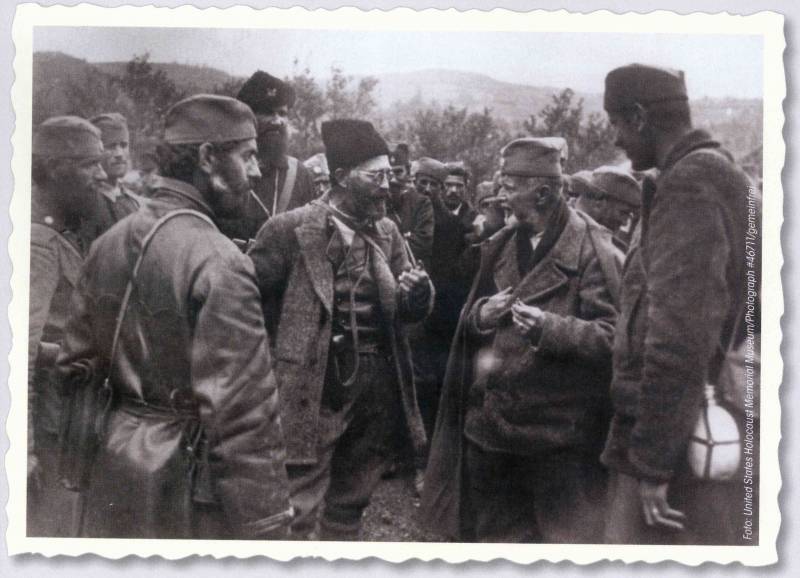
The leader of the Chetniks, Colonel Drazha Mikhailovich (in the center, with a pipe) with his associates (1943)
The Chetniks operated mainly in Montenegro, western Serbia, Bosnia and in the interior of Dalmatia.
Mikhailovich deliberately restrained the actions of his detachments against the German-Italian troops and limited himself mainly to sabotage, since he did not want to expose the civilian population to the danger of punitive actions by the invaders (for example, the mass destruction of hostages, which took place in Kraljevo and Kragujevac).
In 1942, Drazha Mikhailovich established contacts with the government of General Milan Nedic, which began to supply the Chetniks with money and weapons. And many Chetniks, in turn, joined the government's armed formations.
The German and Italian occupation authorities did not have a single opinion regarding the Chetniks.
For example, the commander of the 2nd Italian Army, General Mario Roatta, viewed them as potential allies in the fight against Tito's forces and from the beginning of 42 supplied the Chetniks with weapons, ammunition and food.
In April 1942, the first joint operation of the Italians with the "division" of the governor Mamchilo Juich was carried out. At first, the Germans were against this.
But in 1943, the command of the German troops in the NGH began to establish contacts with the Chetniks at the grassroots level.
***
After Nazi Germany attacked the USSR on June 22, 1941, the Communist International called on all European Communist Parties to join the armed struggle.
The Central Committee of the Communist Party of Yugoslavia on the same day responded to this appeal.
On July 4, 41, a meeting of the General Staff of the Communist Partisan Forces of Yugoslavia was held in Belgrade under the chairmanship of Josip Broz Tito (ethnic Croat). As a result of the decisions made there, in early July, a number of uprisings broke out in Montenegro, Slovenia, Croatia and Bosnia, which, however, were quickly suppressed by the invaders.
On December 22, 1941, in the eastern Bosnian village of Rudo, the First Proletarian Brigade, numbering about 900 people, was created - the first large partisan formation. The number of partisans grew from year to year and reached 1945 by 800000. Tito's partisans were the only force in the civil strife that defended the equality of all the peoples of Yugoslavia.
After Italy surrendered to Anglo-American forces on September 8, 1943, most of the Italian troops in Yugoslavia fled or ended up in German captivity. As a result, large territories fell under the control of the partisans. On November 29, 1943, in the Bosnian town of Jajce, the Anti-Fascist Council for the National Liberation of Yugoslavia proclaimed the founding of a socialist state on the territory of the former kingdom.
***
In Bosnia, in the summer of 1941, the age-old enmity between the Croats and the Serbs resulted in conflicts between the Ustashes and the Chetniks. The Chetniks perceived the Bosnian Muslims as "accomplices" of the Ustasha.
In the settlements of Focha, Visegrad and Gorazde, the Chetniks carried out mass executions of Muslims, many Muslim villages were burned, and the inhabitants were expelled. But the Ustashis also hated Muslims and carried out their own punitive actions.
The commander of the SS volunteer mountain division "Prince Eugen" Artur Pleps, who came from Transylvania and served in the First World War in the Austro-Hungarian army, remarked:
Nationality was determined primarily by religious affiliation.
Serbs were Orthodox, Croats were Catholics. The Bosnians (Serbs and Croats), who converted to Islam during the Ottoman rule, were "traitors" for both.
Regular troops of the NGKh - local self-defense (house-building) - did not protect Muslims. And so they had to create their own militia. The most powerful of these formations was the Hadjiefendich Legion, created in Tuzla by Muhammad Hodjiefendich. Its creator and commander was a lieutenant in the Austro-Hungarian army and subsequently rose to the rank of major in the army of the Kingdom of Yugoslavia.
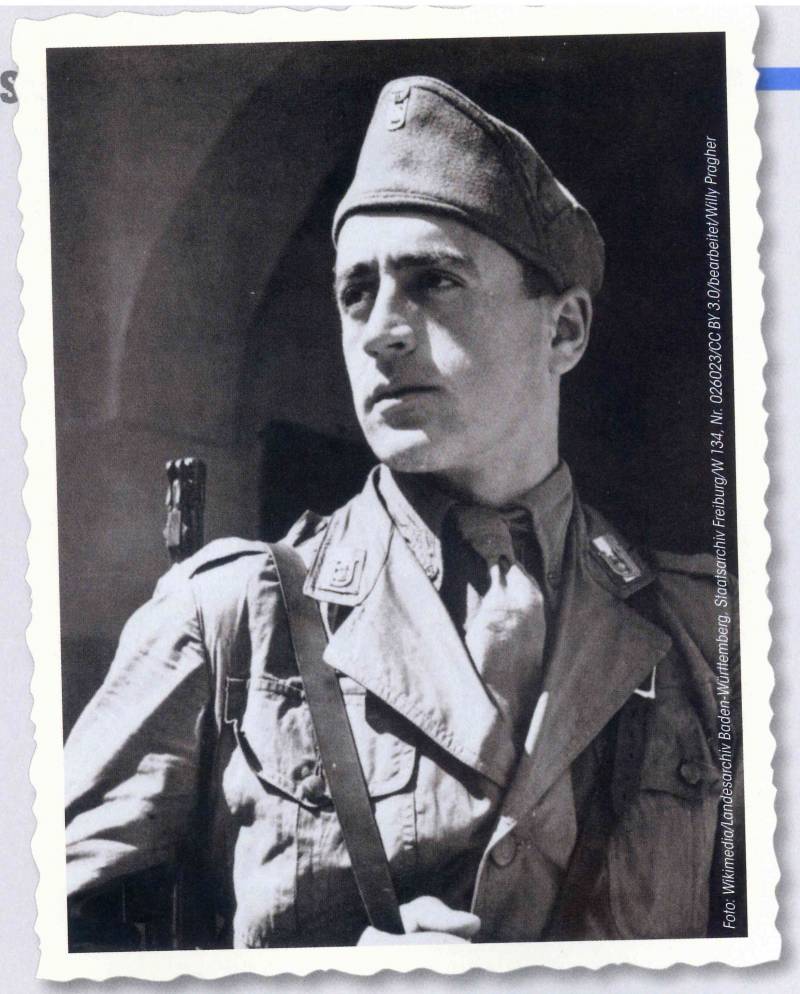
Fighter of the Ustasha armed formations. Judging by the buttonholes, he belongs to the personal protection of the "head" Pavelic
Pavelic wanted to win the sympathy of Muslims and proclaimed their civil equality with the Croats.
In 1941, the Zagreb Palace of Fine Arts was given over to a mosque. But such symbolic gestures have made little difference at the grassroots level. Against the background of dissatisfaction with the Ustasha regime among the Muslim population, nostalgia grew for the times of Austria-Hungary, of which Bosnia and Herzegovina was a part.
***
The growing instability in the NGH caused concern in the leadership of the Wehrmacht and the SS.
On December 6, 1942, SS Reichsfuehrer G. Himmler and the head of the SS headquarters, Gruppenfuehrer Gottlob Berger, presented to Hitler a project for the formation of an SS division from Bosnian Muslims. An important role in this was played by the Muslim rejection of all forms of atheism, and hence communism.
The views of Hitler, Himmler and other leaders of the Reich were based mainly on the "oriental" adventure novels of Karl May. Although the writer himself visited the East only in 1899-1900, after writing his novels, in his work on them he relied on the works of the leading orientalists of that time. As a result, the image of the Islamic East, presented in his novels, is undoubtedly romanticized, but on the whole it is quite reliable.
For Karl May himself, other educated Germans and National Socialists, Islam was a primitive faith of backward peoples, in civilizational terms, standing immeasurably below Western Europe or North America.
The interest of the German leadership in the Muslims was purely pragmatic: to use them in the fight against communism and the colonial empires - Great Britain and France.
In addition, Himmler was of the opinion that Croats, including Muslims, are not Slavs, but descendants of the Goths. Hence, purebred Aryans. Although this theory is highly controversial in terms of ethnology and linguistics, it nevertheless had supporters among Croatian and Bosnian nationalists. In addition, Himmler wanted to create a Bosnian-Muslim SS division to build a bridge to the glorious traditions of the "Bosniaks" - infantry regiments of the Austro-Hungarian army during the First World War.
Formally, the creation of the Croatian SS Volunteer Division began on March 1, 1943. The reason for this was the order of the Fuehrer of February 10, 1943. This division became the first in a series of large SS formations formed from representatives of "non-Aryan" peoples.
Himmler appointed SS Gruppenführer Arthur Pleps responsible for the formation of the division.
Pleps arrived in Zagreb on February 18, 1943, where he met with the German Ambassador Siegfried Kasche and the Croatian Foreign Minister Mladen Lorkovic.
The consent of the "head" Pavelic was already there, but the opinions of the Croatian government and the command of the SS troops differed significantly. Pavelic and Kashe believed that a purely Muslim SS division would provoke an increase in separatist sentiment among Bosnian Muslims. Lorkovic believed that it should be an "Ustashe" SS division, that is, a Croatian formation, created with the assistance of the SS. Himmler and Pleps, on the other hand, planned to create a regular formation of SS troops.
The new division was commanded on 9 March by SS Standartenfuehrer Herbert von Oberwurzer, who had previously served in the SS Mountain Division "Nord". Standartenführer Karl von Krempler was in charge of recruiting. This former lieutenant in the Austro-Hungarian army spoke Serbo-Croatian and Turkish well and was considered an expert in Islam. He was supposed to work together with the representative of the Croatian government, Alia Shuljak.
On March 20, Krempler and Shuljak began touring Bosnian areas to recruit volunteers. In Tuzla, in central Bosnia, Krempler met Muhammad Hadjiefendich, who accompanied him to Sarajevo and brought him into contact with the head of the Muslim clergy, Reis-ul-ulem Hafiz Muhammad Penj.
Hadjiefendich supported the creation of a new division and by the beginning of May had recruited about 6000 people, thus forming its core. Despite the efforts of the SS leadership, Hadjiefendich himself did not join the new division. The Croatian authorities in every possible way obstructed the formation of the unit: they forcibly included volunteers in their local self-defense, and some were thrown into concentration camps, from where the Germans had to pull them out with the support of Himmler.
In April 1943, Gottlob Berger invited the Berlin-based Mufti of Jerusalem, Mohammad Amin al-Husseini, to Bosnia to support the recruitment of volunteers. Al-Husseini, having flown to Sarajevo, convinced the Muslim clergy that the creation of the Bosnian SS division would serve the cause of Islam. He stated that the main task of the division will be to protect the Muslim population of Bosnia, which means that it will operate only within its borders.
Despite the support of the mufti, the number of volunteers was lower than expected. To bring the number of personnel to the required level, even 2800 Croatian Catholics were included in the division, some of whom were transferred from the Croatian local self-defense. The strict requirements for recruits in force for the SS troops were not observed in this case, the minimum fitness for military service was sufficient.
The division was completed on April 30, 1943.
It received the official name "Croatian SS Mountain Volunteer Division", although everyone called it simply "Muslim". On vehicles provided by the NGH government, personnel were sent for training at the Wildenfleken training ground in Bavaria. By the time the training was over, the number of officers and non-commissioned officers was about two-thirds of the required number. They were mostly Germans or Volksdeutsche sent from SS spare parts. Each unit had a mullah, with the exception of a purely German communications battalion.
To be continued ...
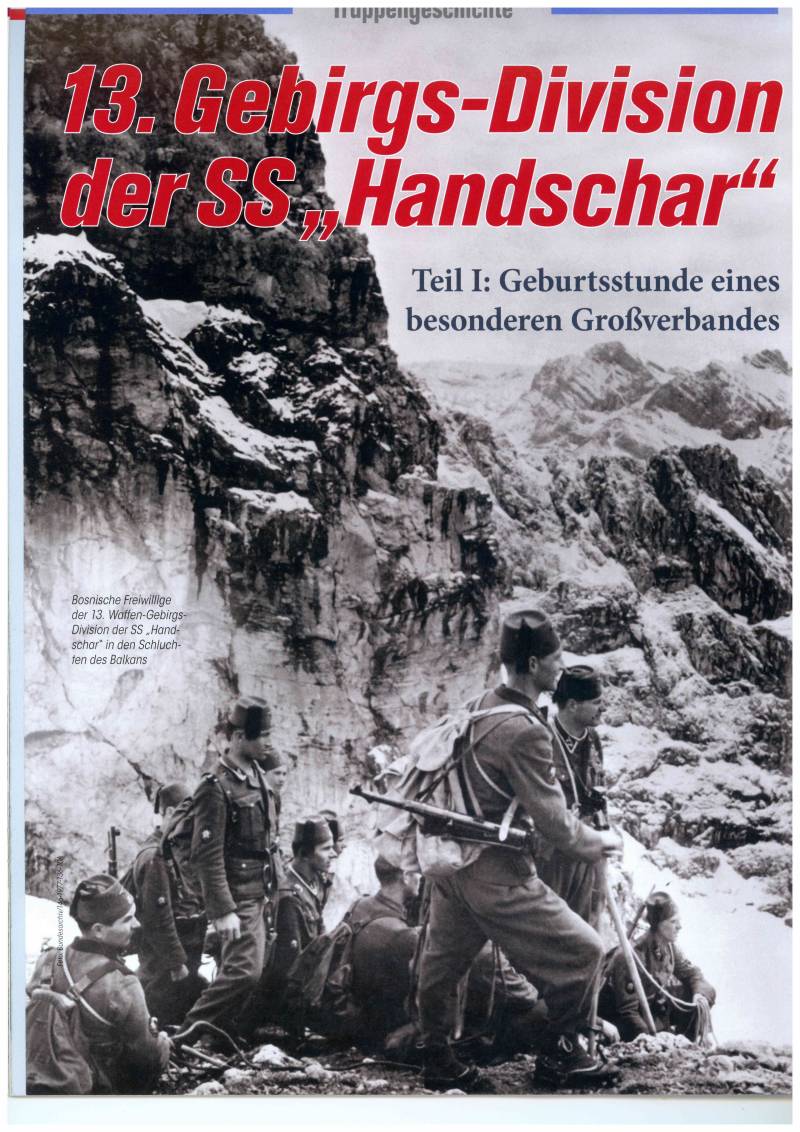
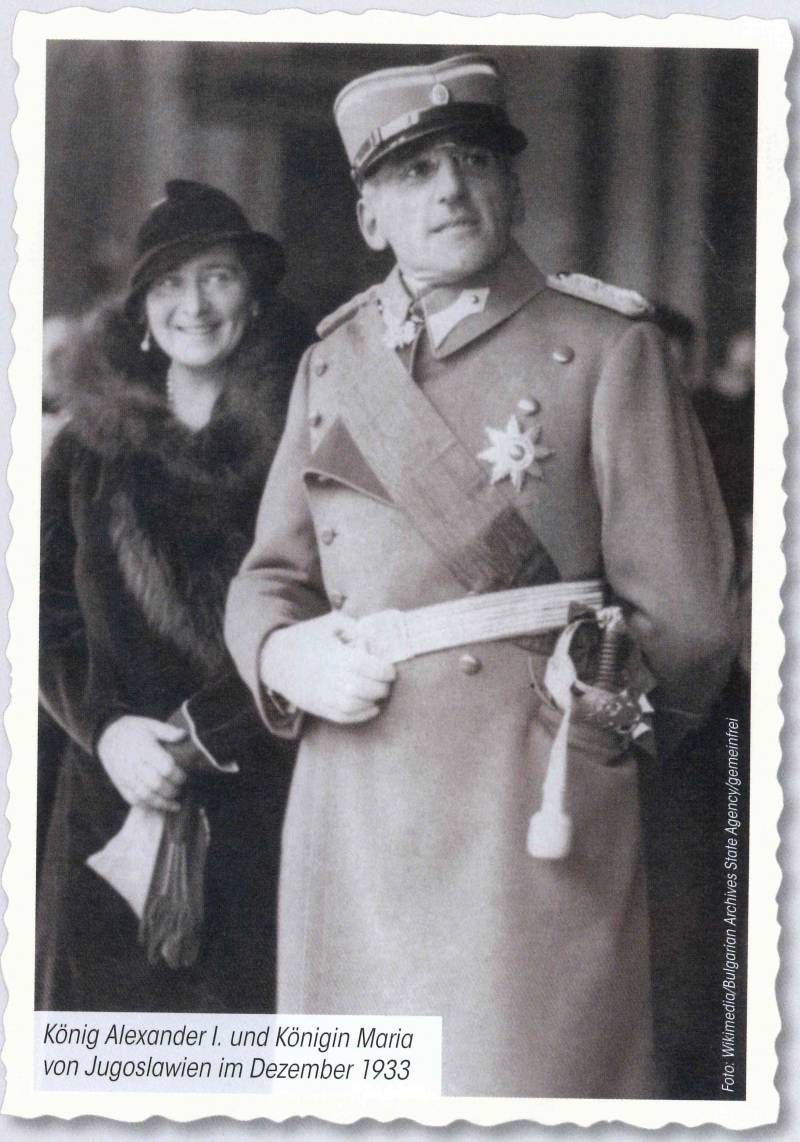
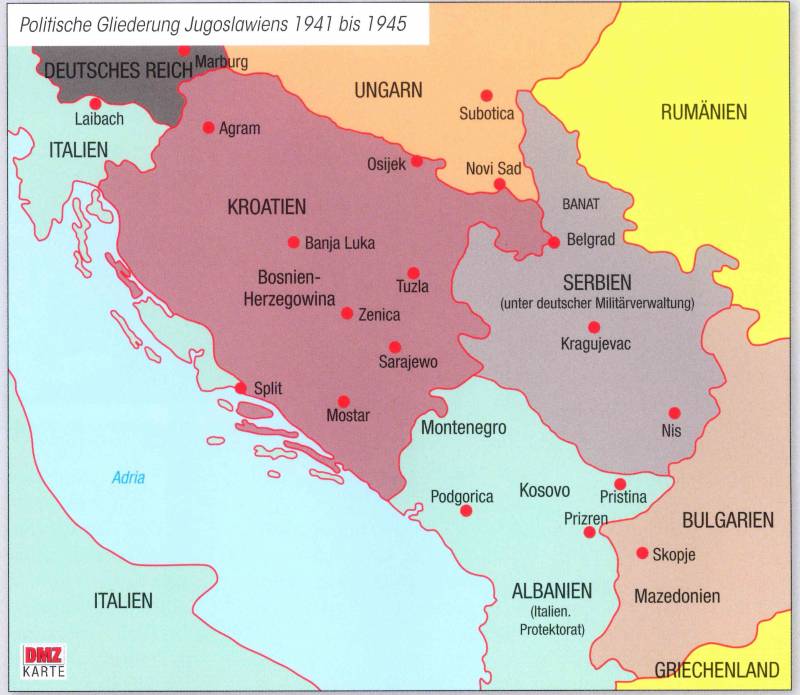
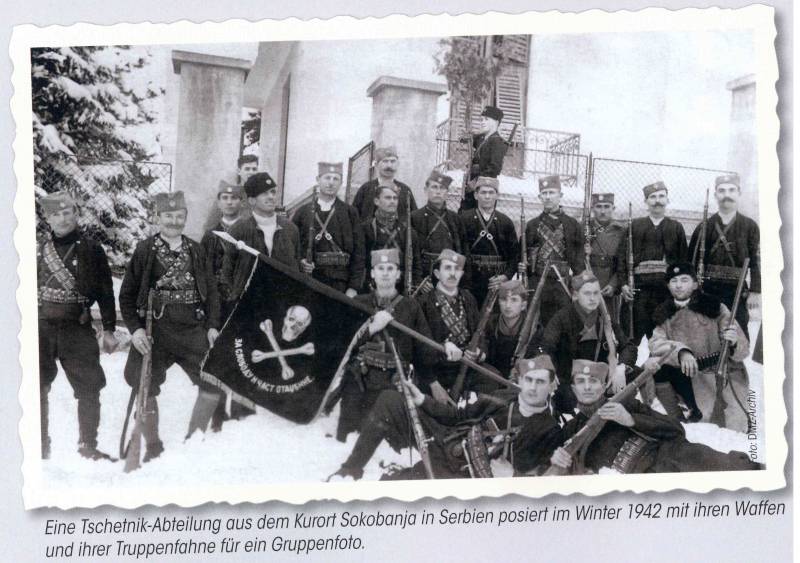
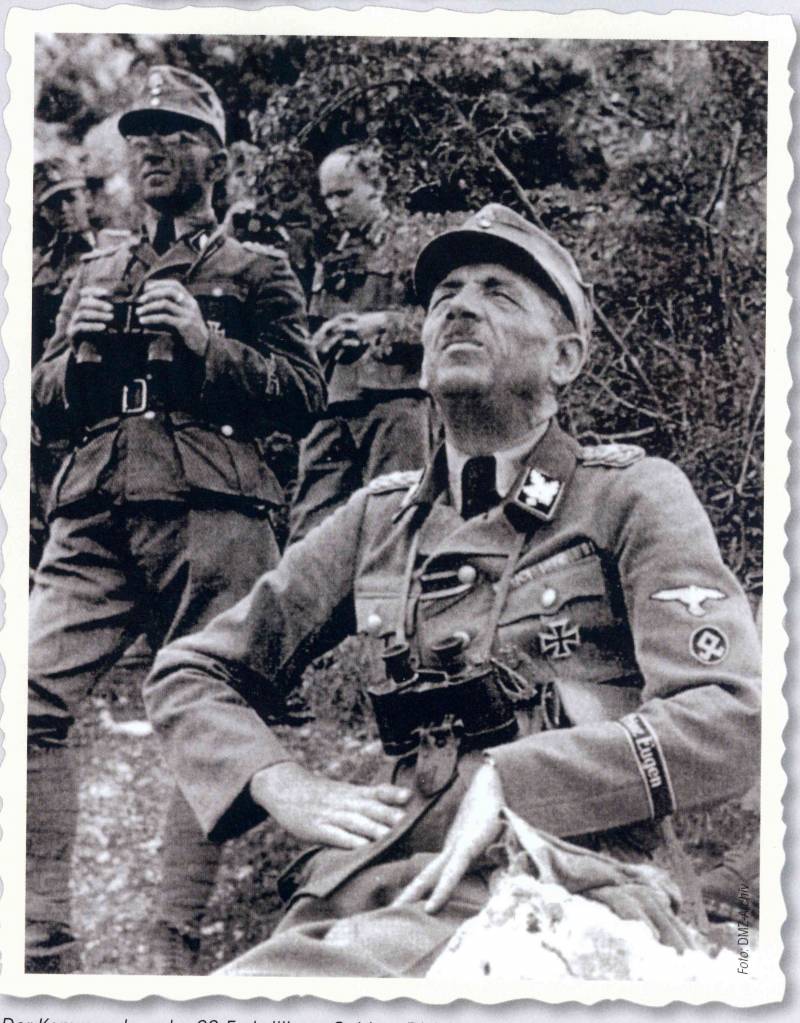
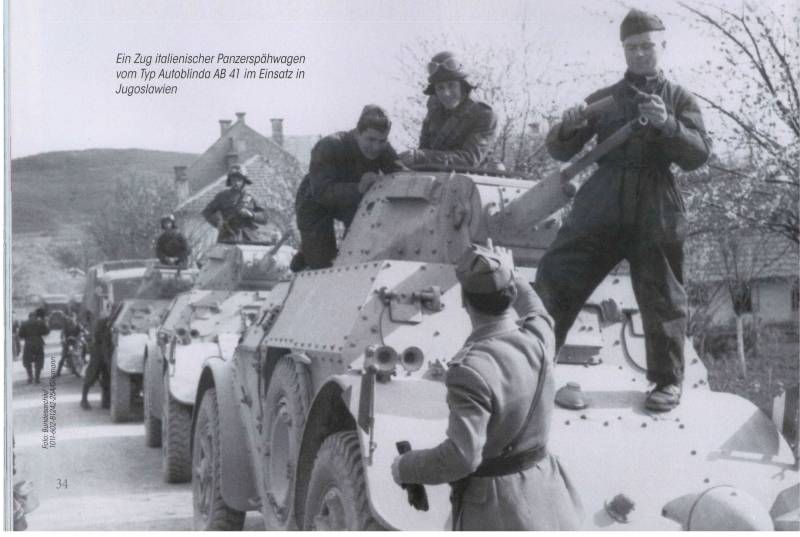
Information